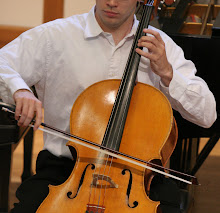Chaos and Complexity
"Human Nature: a hopeful polemic"
Introduction
1. Chaos and Complexity
2. The Structure of Intelligence
____________________________________
Books can and have been written about this subject alone (my library has James Gleick's Chaos (1987) and M. Mitchell Waldrop's Complexity (1992), which are great places to start if you're interested), so I won't spend too much time on it. Suffice to say, for the moment, that the advent of computer modeling offered a new path to realizing that the emergence of complex phenomena from the interaction of simple building blocks was not just possible, it was ubiquitous, and it could be seen to follow undiscovered sets of rules. Thus were born Chaos Theory and Complexity Theory, which are rapidly spinning off areas of specialty.
They can describe things like the unpredictability of weather, the shapes of trees and clouds, and the flocking behaviors of birds--all things other branches of mathematics have great difficulty with--in terms of bottom-up organization, where iteration of the right simple procedural rules that govern the interaction of individual agents (like birds) allows the correct modeling of the complex behavior of the entire flock.
The nonlinear dynamics of many complex systems prevent exact determination of the future positions of individual agents, because the iterative nature of the rules (the results are immediately fed right back into the system) induces great sensitivity to initial conditions. The tiniest errors in measurement are quickly magnified, utterly changing the outcome.
However, many such nondeterministic systems possess a different sort of order. The Lorenz attractor is one of the first examples found of an odd class of objects now known as strange attractors. For a certain range of values plugged into the three simple equations describing this nonlinear system, the solution will oscillate in three dimensions around and between two fixed points (the attractors), but (strangely) without ever repeating itself, crossing its path, or becoming deterministic.
The path it takes is smooth and continuous, lending it an almost hypnotic motion which makes it fairly predictable in the very short term, and its three-dimensional boundaries become evident over time, lending the structure an easily recognizable and beautiful shape, but long-term prediction of the moving point's specific whereabouts is impossible because of the magnifying effects nonlinear systems have on measurement errors. If you want to develop a better feel for how this works, you can play with an interactive version of the Lorenz attractor here, or a more complete one here if you like.
As my first Lorenz link eventually indicates (and you can test this yourself using my last link), not all possible values for the three constants in the equations trigger this complicated behavior sustainably. For some values, the system spirals down to a single attractor, becoming stable. It takes the right range of parameters to create its trademark chaotic oscillation between two strange attractors.
Why am I presenting all this?
Because as I see it, the intertwining of simplicity and complexity exhibited by these types of systems offer a compelling metaphor for the relationship between human nature, societies, and individuals. Equations whose simplicity is apparent (even to those of us who aren't mathematically literate enough to fully understand them) can describe systems which possess both broadly identifiable tendencies and unpredictable individual behavior, although neither attribute need be laid out explicitly in the equations themselves. It is thus entirely plausible that the complexity of human nature may be explained in terms of the interaction of a few simple rules.
Furthermore, the sustainability of the complex life such a system exhibits is impacted by changing the constants in its underlying equations. As a societal metaphor, the attractors might represent the stable anchors which not only prevent a dynamic free society from dissolving into anarchy, but also preserve its capacity to adapt and avoid stagnation. Changing the constants might change the nature of the attractors, possibly causing society to spiral into one, becoming locked in and losing too much of its adaptability to be sustainable over the long term, or go the other way and fragment entirely into anarchy. Conversely, given a universal human nature, a failed society might be brought into full flower by the right adjustments to those constants.
The more we know about the underlying equations that govern human nature, whether they are mathematically stated or not, the more hope we have of deciphering the effects changes in constant values will have on societal attractors.
As you can see, the vocabulary that has grown up around the Lorenz attractor and its relatives offers us an intriguing language with which to describe these relationships. You might say that through experience we have identified some of the attractors for human society (democracy, socialism and tribalism, for example) and human thought (liberal, conservative, monotheistic, etc.) Can we discover the governing equations of human nature which shape both the orbits of individuals and societies and their strange attractors? Could a better understanding of them allow us to safely apply new values as constants, opening up access to currently unsuspected capabilities?
At the moment, my answers are yes, and I don’t know.
The next chapter, "The Structure of Intelligence," can be found here.


0 Comments:
Post a Comment
<< Home